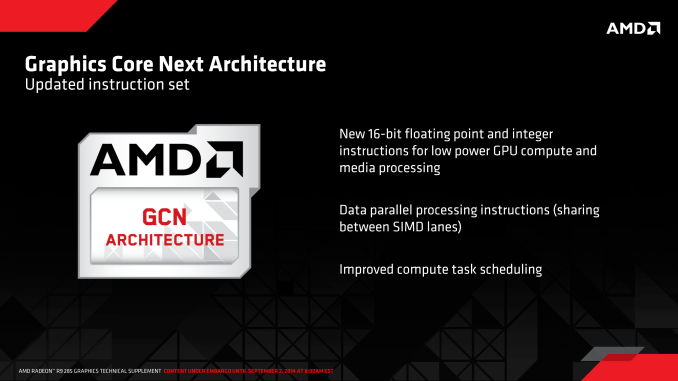It's GCN 1.2 with some new functions, AMD is still calling it 3rd gen GCN.
"Also, the front-end of Fiji corresponds to Tonga. It has even been adopted 1: 1, although twice as large back-end to be supplied with data. It's like Hawaii designed fourfold and brings introduced by Tonga optimizations with it.
AMD confirmed that that can be a bottleneck in low resolutions, in which the back-end is less demanded. Was developed in high resolutions, for Fiji, however, is also the smaller and towards Hawaii significantly improved front-end of Tonga sufficient to supply the shader units with the required data. The relationship to Tonga suggests:
Fiji is once again on the "Third Generation of GCN" and thus GCN 1.2 and not 1.3 or even GCN GCN 2.0. Thus, the chip supports DirectX 12 with the feature level 12_0."
http://www.computerbase.de/2015-06/amd-radeon-r9-fury-x-test/
The biggest improvement is actually related to these:
Tremendous improvements in perf/w for these tasks as well as Compute tasks.
In fact, it's quite an achievement to have a chip so powerful at compute that manages to trade blows against a pure gaming chip, at the same die size and similar TDP.
Sadly, it's priced too high for the consumer variant and the gimped 4GB HBM will make it unwanted for HPC.






